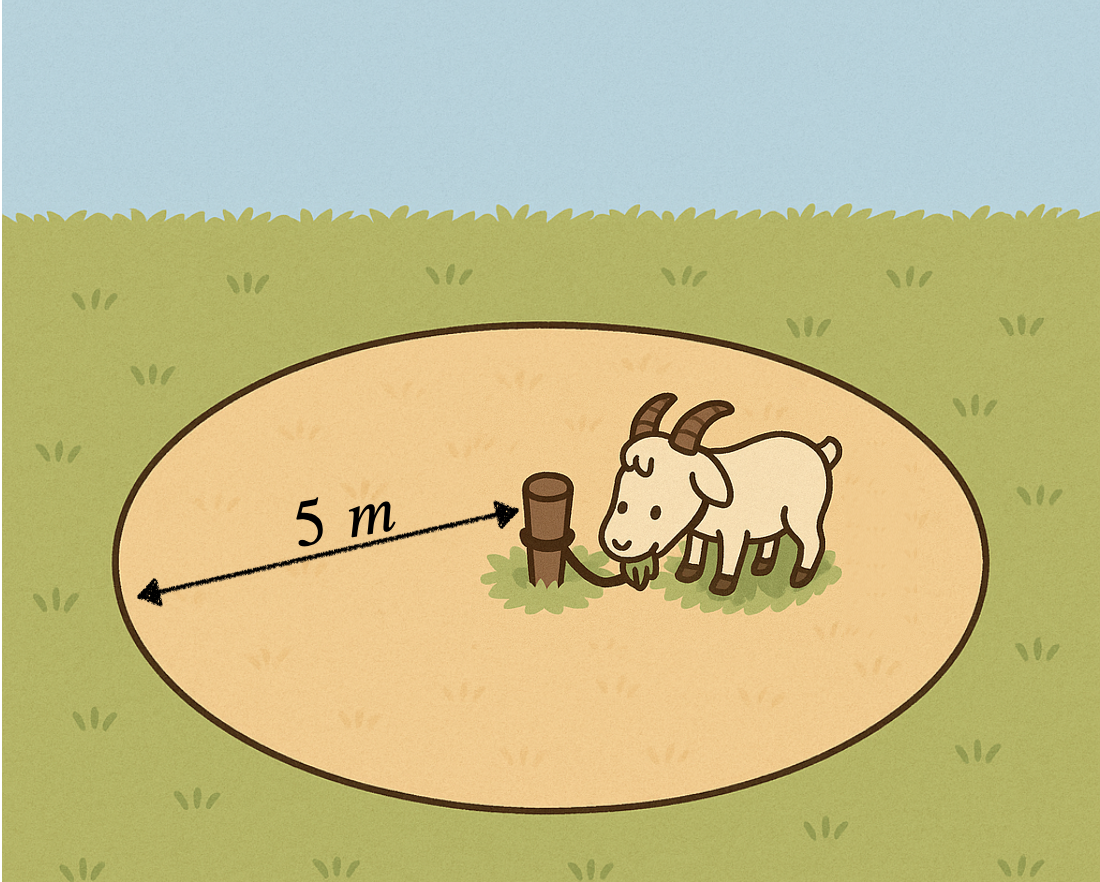Problems
Show that Pell’s equation \(x^2-dy^2=1\) has a nontrivial solution.
For the following equations, find the integer solution \((x,y)\) with the smallest possible absolute value of \(y\).
\(x^2 - 7y^2 = 1\);
\(x^2 - 7y^2 = 29\).
Find the integer solution \((x,y)\) with the smallest possible absolute value of \(y\). \(x^2 - 2y^2 = 1\);
This equation helps to find all the square-triangular numbers, namely all the numbers that are perfect squares and can be represented as the sum \(1+2+3+...m\) for some \(m\). Finding such a number is equivalent to finding a solution to the equation: \(2n^2 = m(m+1)\). Or finding a solution to the Pell’s equation \(x^2-2y^2 = 1\) for \(x=2m+1\), \(y=2n\).
A rectangle has a perimeter of \(1\). Is it possible that its area is larger than \(1000\)?
Zahra has a \(3\times 3\) grid of little squares. Can she write the numbers \(2,4,6,7,8,10,12,14,16\) inside the little squares - using each number exactly once - so that the sum of the three numbers in every row is the same?
Sam was playing on the \(3\times 3\) lights out board, and starting from all lights off, he pressed every single button on the board. What light pattern did he get in the end?
Find a quiet plan for the \(1\times 5\) “Lights Out" board.
Welcome everybody! In today’s session we will be talking about divisibility tricks. Recall that a number \(a\) is divisible by another number \(b\) if \(a\) divided by \(b\) is a whole number. Often, there are quick ways to check divisibility without doing the full division. For example, a number is divisible by \(5\) if and only if its last digit is \(0\) or \(5\). It is important to remember that this phrase “if and only if" actually means two things:
If a number is divisible by \(5\), then its last digit must be \(0\) or \(5\).
If a number’s last digit is \(0\) or \(5\), then the number is divisible by \(5\).
It is useful to think about this in terms of there being two directions. In today’s sheet we will see many more such tricks, and remember: usually you will need to prove both directions!
When Robinson Crusoe was stranded on his island, he found a goat and decided to keep it. To stop the goat from running away, he tied it to a peg in the ground with a rope. The goat wandered around happily, eating all the grass it could reach until the rope pulled tight. For example, Robinson noticed that with just one peg and one rope of length \(5\) meters, the grazed area was exactly a circle of radius \(5\) meters!

In this sheet we will explore what shapes the goat can graze when Robinson uses pegs, ropes, and even small sliding rings in slightly more complicated positions. In mathematics, the shape made by all points that satisfy a condition is called a locus (plural: loci). In our problems, the locus of the goat is the area it can graze. Before we begin, here are the rules of the game:
We will treat the goat as a single point, and the rope as a fixed length that cannot stretch, so the goat can graze any point it can reach before the rope is tight. A peg is simply a point in the ground that does not move. Let’s see some more interesting examples:
